The dark, wooden L-shaped bar sits prominently in the otherwise light space that is Fenrir, a Scandinavian-leaning restaurant that occupies the second story of an old Portland house. Six leather-topped stools surround the bar, all facing a vintage-looking mirrored armoire topped with an impossibly large selection of aquavit bottles.
Behind it, Tyler Hauptman pours ice into a cut-glass vessel, the cubes sparkling in the afternoon light. The champagne cork of his first-ever sabered bottle is tattooed on his right forearm and it moves with him as he mixes and pours. It’s clear without even opening his mouth: this man has a deep love for beverages.
While his roots are in wine and coffee, Hauptman has made a name for himself around town by creating clean, balanced cocktails made with fresh ingredients and a certain Scandinavian twist. But his story isn’t one of formal training or lengthy apprenticeships. His is one fueled by passion, by the season, and by learning to trust his own palate. And if his unique take on the classic negroni is any indication, it’s a palate worth trusting.
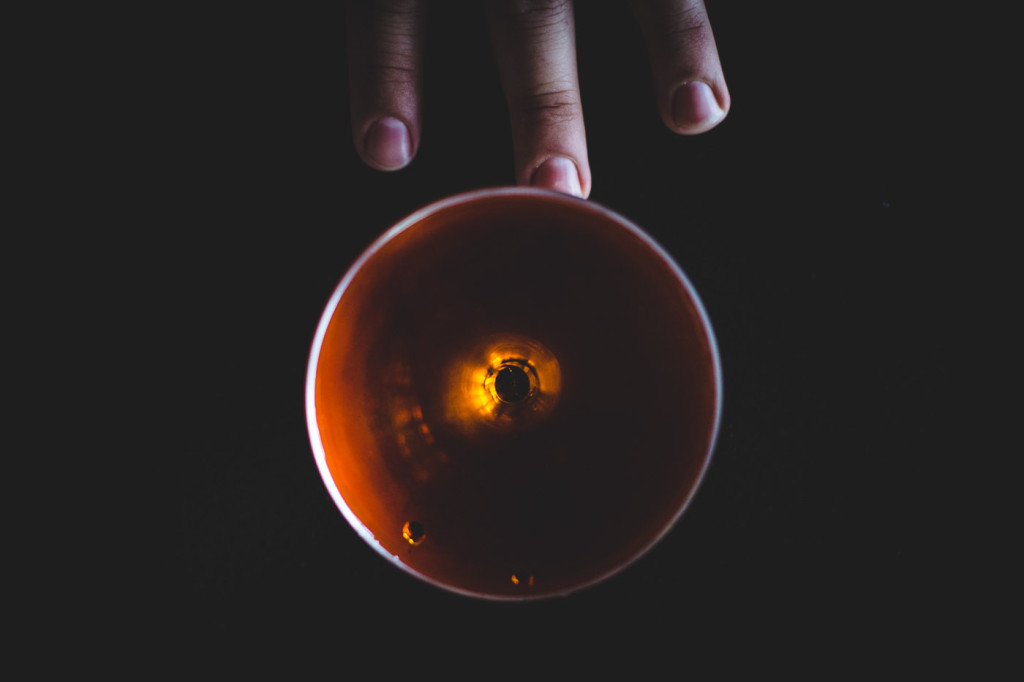
Scandinavian-Inspired Negroni
1 oz. Brennivín
¾ oz. Aperol
¾ oz. Carpano Antica Formula Vermouth
Orange twist
Directions: Stir together ingredients in a mixing vessel with ice and strain. Serve up with an orange twist.
Tell me about what you were into growing up and how you ended up in Portland.
I grew up in San Diego, I lived there until I was 18, and then I moved out to Portland. My dad was a chef, so I’ve always been around food. Only, I drifted more to the beverage side of things. I started working as a barista when I was 16 and I did that for 10 years. That’s what appealed to me about Portland: they had a coffee community and a coffee scene, and that’s what initially moved me up here.
Then I just got bored making coffee. You can only do one thing for so long, and coffee is just a continuous struggle. It’s really just now establishing itself, and it’s really cool and there are exciting things happening. But it’s a lot of work convincing someone to pay a premium for something that has been thrown away for so long in terms of quality, and that’s how I got interested in wine. It had a much more established learning structure. It’s very much historical, and it’s very important to a lot of people. And also, drinking is fun. So, I was 23 and I decided to get certified as a sommelier.
I’ve always been interested in alcohol because it’s just an interesting thing. It’s got an insane amount of culture and history and people flock to it. It’s a really good way to entertain, it’s a creative outlet, and it’s a cool focal point for people to gather around. Of course, it’s also got a lot of downsides. But I think with the proper amount of self-control, it’s one of the most fascinating things to me.
How’d you make your way into bartending?
I really wasn’t a bartender until I came to Fenrir. Ian [Wilson] and I met when I was doing my sommelier classes. He would talk about food and I would talk about wine, and we would just hang out. We would share ideas and would always talk about collaborating.
Then he had this space where he would set up “friends and family” dinners—pop-ups—that he was putting on with John [James Dudek]. Then one day, Ian was like, “I’ve got this dinner, do you want to do some beverage pairings for it?” I was like, “Sure, when is it?” And he said, “Friday.” So, that was five days to plan. That was the first dinner and it went really well, so we decided to keep doing it. But I still really only knew how to do wine. When we eventually decided to make it an official restaurant, I was like, “Shit, I guess I have to learn how to be a bartender too.”
So I called up a friend of mine, Jesse Card, and asked him to show me the basics of bartending. He showed up here with a couple bottles of liquor, some jiggers and shakers and was like, “Here’s a manhattan recipe. Here’s an old fashioned recipe. There you go!” And we worked together, and John was here, and the three of us made cocktails. That was essentially my one-hour crash course on how to be a bartender.

Have you done any formal training since then?
Nope. But I guess it’s multifaceted. I like to go out and drink by myself quite a bit. And I always sit at bars and watch bartenders. So I’d had several years of just watching. I think that helped me a lot because I’d always peek and see what a well setup was. With wine, I had learned about mise en place. And the biggest goal for service is doing the most amount of things in the least amount of steps. You can really apply that to anything you do, and it’s huge to apply to bartending, especially if you want to be quick and efficient.
Also, being connected in the community has helped. A couple of people have guest bartended with me—Michael Shea, who owns Rum Club, and Jacob Grier, who works at the Multnomah Whiskey Library. It’s cool because they work on the same side of the counter, so I get to watch them set up and watch how they work. And that helps me because it gives me new ideas.
Are there any hurdles that stand out for you in this first year of bartending?
I think a lot of the way we opened the restaurant with not a huge amount of capital. I’d think to myself, “I want to try to make this cocktail.” And then I’d realize we don’t have two ingredients for it and I’d be like, “Can we afford to buy this? Can I even afford to test this cocktail?”
Also, creating unique things can be tough. I’m a big fan of simplicity in drinks. I think it’s fun to have crazy, multi-ingredient cocktails, but that’s not exactly what I want to make. I like simple things where the true flavors can express themselves. And if you use good, fresh ingredients then you don’t need too much stuff. I was actually talking to my friend Ed Villareal, who is the bar manager at The Woodsman Tavern. He’s an amazing bartender and he knows a lot. I asked Ed, “How do you create a cocktail from nothing?” And his advice to me was, “You’ve got a good palate. You know what tastes good. So just put stuff together and trust yourself.” Which was very inspiring, but also really frightening because that means everything we put on the cocktail menu is an expression of myself and my tastes.
The restaurant is also very seasonal. I’ve found that even though it’s sometimes hard to keep up with that, I actually like prepping and making my own syrups inspired by the season.
Are a lot of your cocktail components made from scratch then?
We pretty much make everything from scratch. A lot of places forget that if you compromise your margins just a little bit to have a quality base ingredient, it’s totally worth it.
We make our own ginger syrup in house and it’s the easiest thing in the world. We’ve got a drink with lingonberry in it right now, and I just cook down lingonberries and then strain it out. It’ll potentially go bad because it’s a fresh product. But you just make a small amount and prep it out. And it tastes good and fresh because it is good and fresh.
Chef Ian is really good with science, so that helps. Sometimes I’ll go up to him and be like, “I have this idea. How do I do it?” With the ginger syrup, he told me the different ways we could do it and showed me the ropes of cooking it. We put a little bit of cream of tartar in the ginger syrup because it boosts acidity and makes it more shelf stable—which I would have had no idea about. You could also use citric acid, which does the same thing. But citric acid has more of a definable acidity, whereas cream of tartar just neutrally boosts acidity. Ian is really helpful, to say the least.
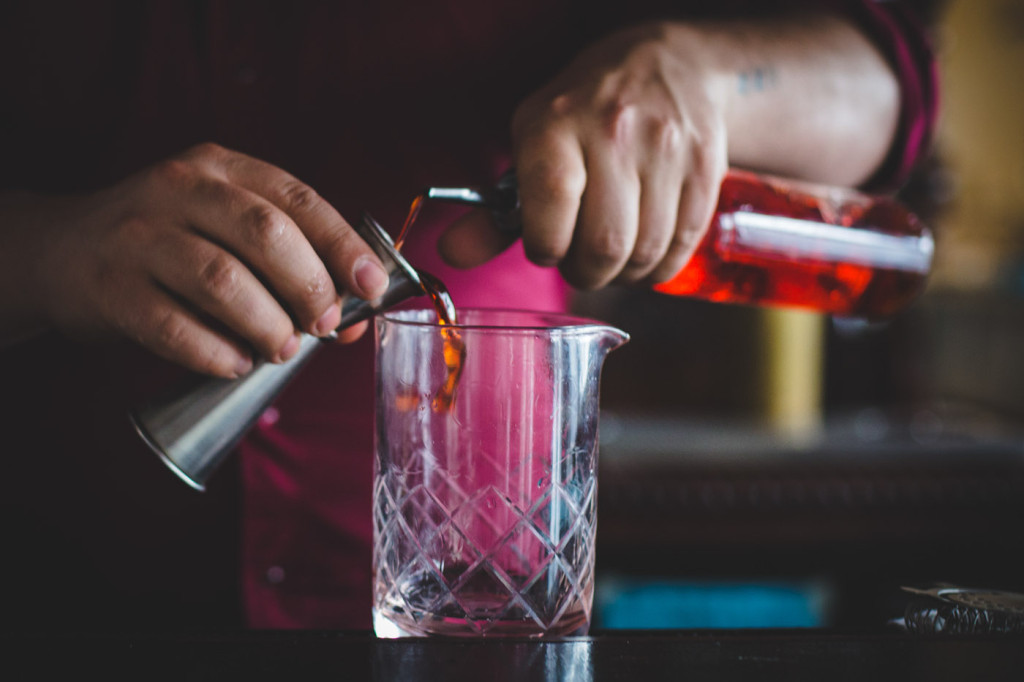
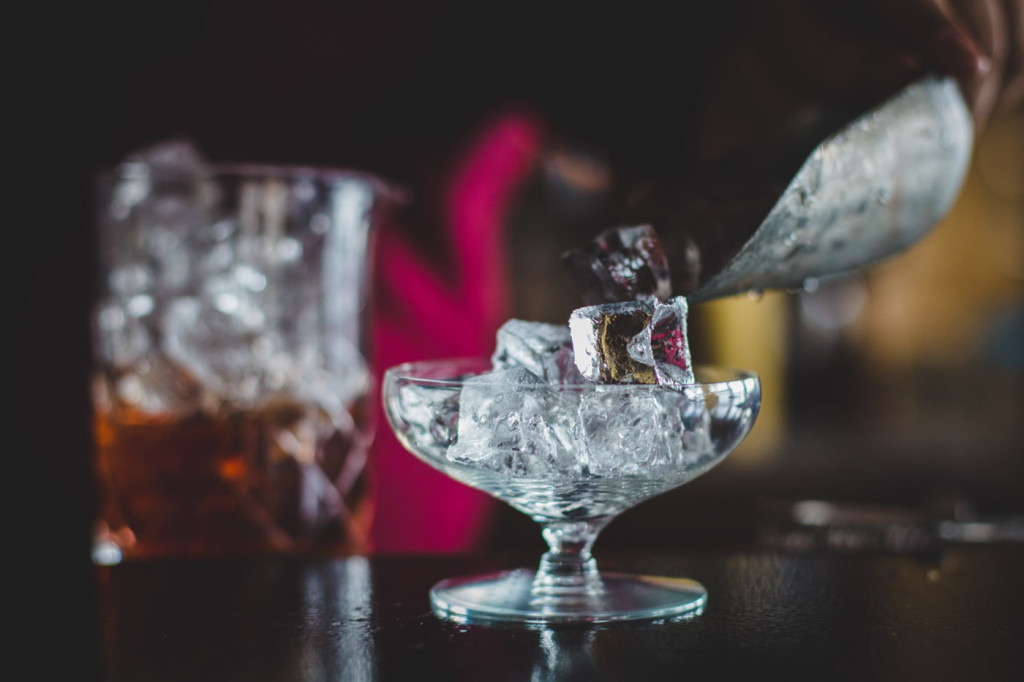
What would you say your cocktail philosophy is?
Being seasonal is really important. I wouldn’t really want to drink a Stone Fence in the summer. Stone Fence is apple cider, rye whiskey and angostura. It’s a warming cocktail.
I also think fitting your cocktails to your setting is important. I would never take this cocktail list at Fenrir and put it anywhere else. It’s important to make cocktails to pair with what you’ll be eating. For example, I helped out my friend Cliff [Allen] of the People’s Pig with his cocktail list. That’s a barbecue place, so I want a bunch of whiskey, I want sweet tea and I want smoke flavor. I would never put a smoky old fashioned on this menu though; it would overpower all our food and it wouldn’t fit with it.
What’s the vibe you go for here at Fenrir, which is Scandinavian-leaning?
Essentially, I take a lot of classic cocktails and find a way to incorporate aquavit into them. It’s a Scandinavian liquor and it’s surprisingly versatile. I’ve got 12 aquavits on that back bar right there and they’re all shockingly different. Some—like the Temperance—are aged and have more of that caramelization and barrel time. They can replace things like whiskey. Then there are others that are clean and un-aged, so you can treat them like a gin. There are just so many different flavor profiles.
One of our signature cocktails, the Norse Quarter, went on the menu a little while ago and it’s just going to stay forever because it’s awesome and people like it. One of my favorite cocktails is the Vieux Carré, which originated in New Orleans as a kind of symbolism for all of the people of New Orleans. You’ve got rye whiskey for Americans, sweet vermouth for Italians, cognac for French, and Angostura bitters for Islanders. If you look at that as a guideline, the Norse Quarter is like that, but subbed out for different ingredients. I replace the rye whiskey with aquavit, I replace the cognac with French whiskey, and for the sweet vermouth I use Punt e Mes, which is very aromatic and bitter. It gets an entirely different taste profile. It’s an entirely different drink.
Is that how you came up with your negroni, which has become quite popular with the local crowd around here?
It’s the same with the negroni. At its base, a negroni is just a spirit, vermouth and a bitter. So most traditionally, it’s gin, campari and sweet vermouth. But I was just playing around with Brennivín and with aquavits one day and was like, “Let’s try this one.” I feel like aperol is a lot brighter than campari. Campari is a little bit darker and sweeter. But I think Brennivín is good with lemon and brighter flavors, so I was subbing out ingredients to get new drinks.
I should point out Brennivín is a really important liquor to us. We found out about it because Jacob Grier introduced us to it and we got to try it, but it wasn’t available in Oregon because Oregon is a controlled state. So we have to buy all of our liquor from the state. We petitioned the OLCC to get Brennivín to Oregon and it worked. I put it in a lot of cocktails because I’m really stoked about that. Plus it tastes great. It’s 100-percent caraway aquavit, so it’s really bready and really rye-y.
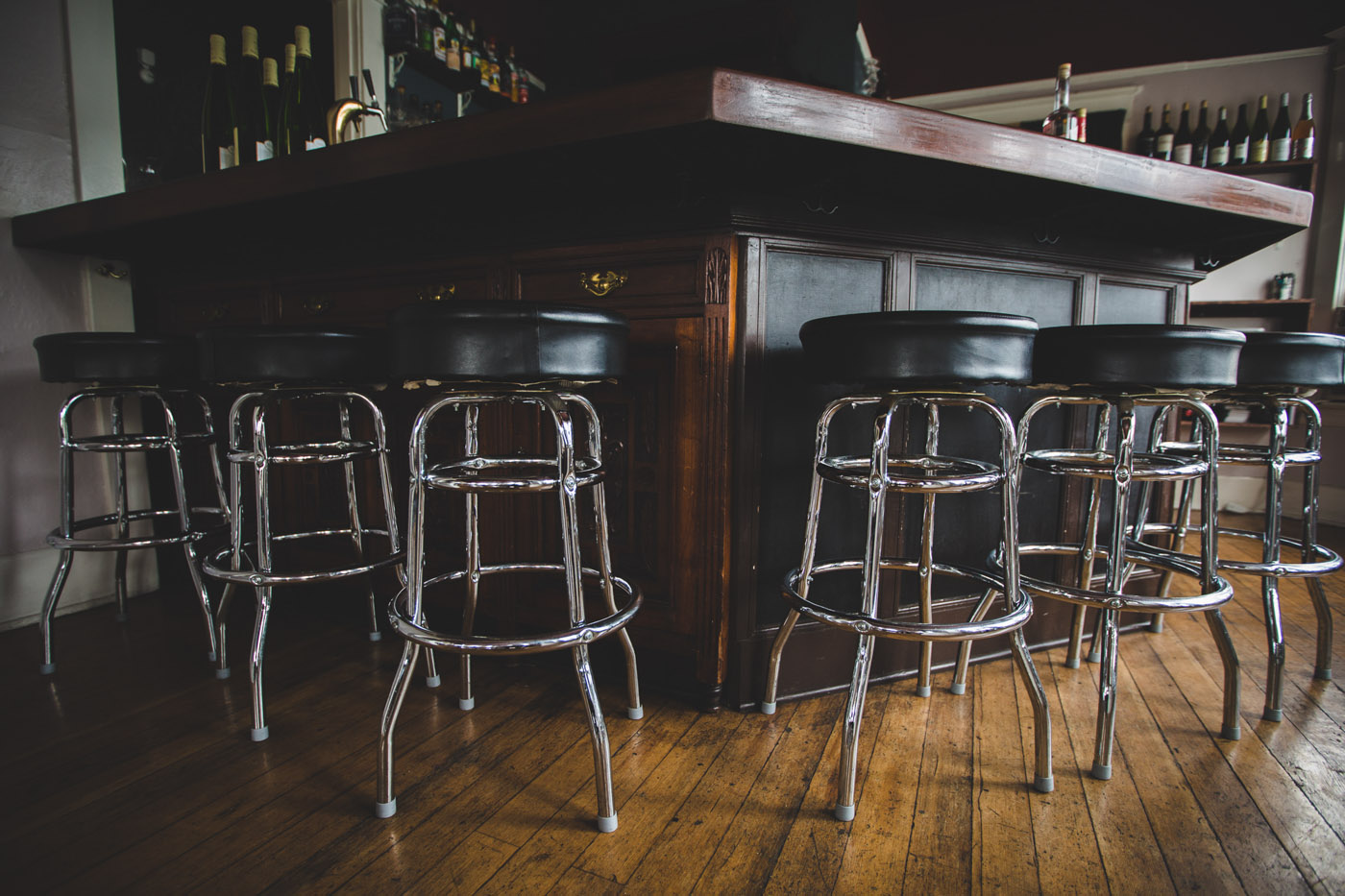
What are some of your favorite cocktails that you’ve ever created for the restaurant? Besides the negroni.
My favorite is the negroni. I know I’m not supposed to say that, but it’s really good. It’s become my go-to.
Well, Negroni Week is coming up…
We’ll be donating $1 of every negroni sale to non-profit Friends of Trees. If you go to the Negroni Week website it has the list of all the bars and their charities. But it’s a fun thing because it’s drinking negronis for a good cause.
Can you give readers a few pointers for making your Scandinavian-inspired negroni?
I think the trick to it is this: all three of these ingredients are pretty sweet. What I do is I over-stir it a little bit just to dilute it a bit more than I usually would, and that balances out the sweetness. Then I serve it up with an orange twist.
I’d stress to people to keep their vermouth in the fridge. Vermouth is a wine and it will spoil, which most people don’t realize. Once you open it, it will start to deteriorate. Also, a good rule of thumb when making cocktails is if it has citrus in it, you shake it. If it doesn’t have citrus, you stir it. So with the negroni, it’s all liquor, so you just stir it.
—
Fenrir
2005 SE 11th Avenue, Portland, OR 97214





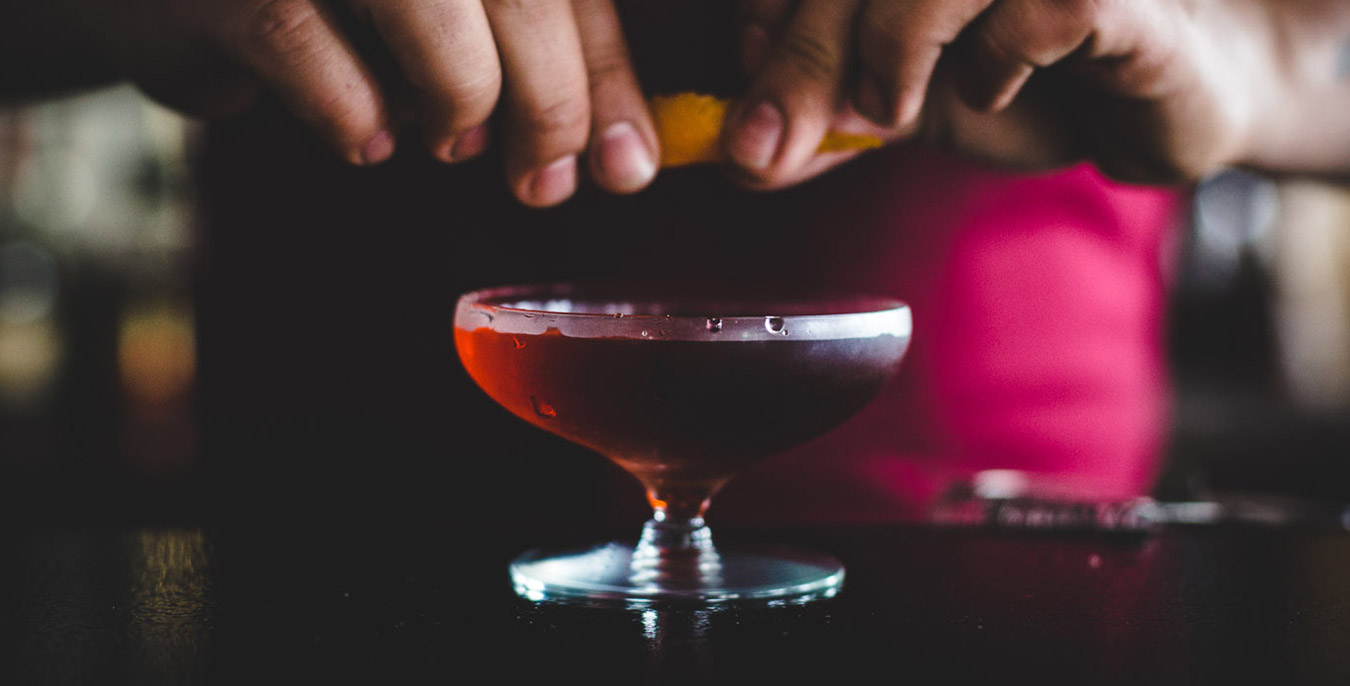

Our comments section is for members only.
Join today to gain exclusive access.